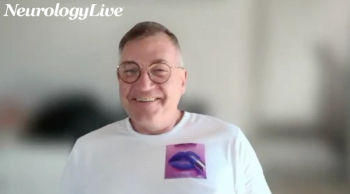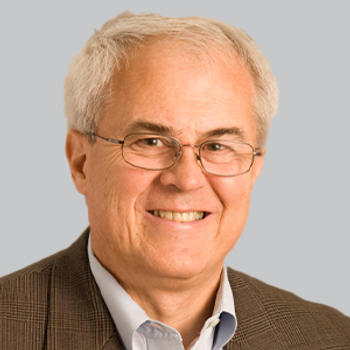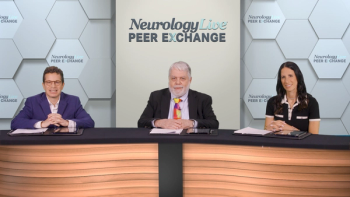
Cannabinoids Show Promise in Epilepsy and MS, But Much Remains Unlearned
Experts say that while CBD and THC may have potential in multiple sclerosis and epilepsy, research on the endocannabinoid system is in its infancy—and the literature isn’t perfect.
Daniel Friedman, MD
Based on the current clinical evidence, some cannabinoids may provide some efficacy while remaining safe in neurological disorders such as multiple sclerosis (MS) and epilepsy, though the jury remains out on other conditions.
A trio of experts—Daniel Friedman, MD, and Jacqueline A. French, MD, from NYU Langone; and Mauro Maccarrone, PhD, from the University of Rome—explored the available literature for the safety, efficacy, and mechanisms of action for cannabinoids in a number of neurological disorders, ultimately finding that there is scarce evidence from large and well-controlled studies for the use of phytocannabinoids most neurological disorders.1
“The available data are often limited to anecdotal reports and animal experiments,” they wrote. “Additional clinical trials in progress (e.g., NCT03614663 and NCT03087201) might provide evidence of efficacy of cannabinoids for other neurological disorders, but early pilot or early clinical studies in patients with dementia and pain have not shown substantial efficacy in symptom reduction.”
In their viewpoint, the epileptologists (Friedman and French) and the researcher in Immunochemistry, Chemical Biology, and Biochemistry (Maccarrone), explored what the current understanding of cannabinoids lends to the elucidation of their potential mechanisms of action and summarized the challenges faced by investigators in interpreting their findings. Given the more pertinent recency of the clinical trials done with cannabinoids in epilepsy disorders, such as Dravet syndrome and Lennox-Gastaut syndrome (which recently got an FDA-approved therapy in cannabidiol [CBD], sold under Epidiolex, from GW Pharmaceuticals), they chose to narrow their focus mainly to those trials, with a brief touching on those in multiple MS spasticity.
“Although there is substantial use of non-standardized cannabis-based treatments in countries where such products are legal, we do not discuss clinical trials that use non-medicinal grade product, because controlled studies are scarce,” they explained.
In addition to the lack of long-term evidence with it, notably, the trio pointed out a potential confounder in the use of CBD in epilepsy conditions is that it inhibits the hepatic P450 enzymes CYP2C19, CYP2D6, and CYP2C9 at micromolar concentrations. This they wrote, “can lead to important drug interactions as these pathways are also involved in the metabolism of antiepileptic drugs.”
In MS, they explained, the results speak for themselves.2-7 While there are positive trials, and possibly “some patients classified as high responders,” there are as many negative trials. The authors clarified that this may suggest merely a subset of patients who would derive benefit, though the concerns about unblinding in enrichment trials muddy the water.
“On the basis of this scarce and conflicting evidence, for the majority of patients with multiple sclerosis, it seems reasonable to try conventional anti-spasticity therapies first, and reserve nabiximols for those who do not respond or tolerate these treatments,” they wrote.
While there are upward of 110 possibly biologically active phytocannabinoids, the group mainly discussed CBD and tetrahydrocannabinol (THC) and the endocannabinoid system, due to the majority of research centering there. Until a small number of studies began recently, no work has been done in understanding the mechanism of actions of these phytocannabinoids.
A number of trials of CBD in epilepsy have been undertaken. In 1 phase 3 trial, 2 doses of cannabidiol were compared with placebo for patients with LGS.8 There was a 41.9% reduction in drop seizures in patients prescribed a 20 mg/kg/day cannabidiol regimen, a 37.2% reduction in those on a 10 mg/kg/day cannabidiol regimen, and a 17.2% reduction in the group given placebo (P =.005 for the 20-mg cannabidiol group versus placebo group, and P = .002 for the 10-mg cannabidiol group vs. placebo group).
In a separate study in Dravet syndrome, which was also published in NEJM, the median frequency of convulsive seizures per month declined by -6.5 from 12.4 at baseline for patients treated with cannabidiol.9 In the placebo group, seizures declined by just 0.8 from baseline. There were 43% of patients achieving a 50% reduction with cannabidiol compared with 27% with placebo (OR, 2.00; P = .08).
The third study focused on LGS.10 In this 171-patient group, drop-seizures declined by 43.9% with cannabidiol compared with 21.8% with placebo. The mean difference between the groups was -17.21%.
Friedman, French, and Maccarrone concluded that while the knowledge of the endocannabinoid system is limited and exists mostly in epilepsy and MS, the literature is in its infancy. Continuing to learn may possibly stimulate the development of additional novel therapies.
“However, elucidating lipid-based signaling systems is difficult. For instance, it took almost 30 years since the discovery of the CB1 receptor,” they wrote. “Scarcity of knowledge about molecular structure of most elements of the endocannabinoid system prevents the development of selective tools to address their effect on signaling pathways.”
REFERENCES
1. Friedman D, French JA, Maccarrone M. Safety, efficacy, and mechanisms of action of cannabinoids in neurological disorders. Lancet Neurol. Published online March 22, 2019. doi.org/10.1016/S1474-4422(19)30032-8.
2. Wade DT, Makela P, Robson P, House H, Bateman C. Do cannabis-based medicinal extracts have general or specific effects on symptoms in multiple sclerosis? A double-blind, randomized, placebo-controlled study on 160 patients. Mult Scler. 2004; 10: 434—41.
3. Wade DT, Makela P, House H, Bateman C, Robson P. Long-term use of a cannabis-based medicine in the treatment of spasticity and other symptoms in multiple sclerosis. Mult Scler. 2006; 12: 639—45.
4. Collin C, Ehler E, Waberzinek G, et al. A double-blind, randomized, placebo-controlled, parallel-group study of Sativex, in subjects with symptoms of spasticity due to multiple sclerosis. Neurol Res. 2010; 32: 451—59.
5. Koppel BS, Brust JC, Fife T, et al. Systematic review: efficacy and safety of medical marijuana in selected neurologic disorders: report of the Guideline Development Subcommittee of the American Academy of Neurology. Neurology. 2014; 82: 1556—63.
6. Novotna A, Mares J, Ratcliffe S, et al. A randomized, double-blind, placebo-controlled, parallel-group, enriched-design study of nabiximols* (Sativex((®) ), as add-on therapy, in subjects with refractory spasticity caused by multiple sclerosis. Eur J Neurol. 2011;18: 1122—31. 7. Markova J, Essner U, Akmaz B, et al. Sativex® as Add-on therapy Vs. further optimized first-line ANTispastics (SAVANT) in resistant multiple sclerosis spasticity: a double-blind, placebo-controlled randomised clinical trial. Int J Neurosci. 2018: 1—10.
8. Devinsky O, Patel AD, Cross JH, et al. Effect of Cannabidiol on Drop Seizures in the Lennox—Gastaut Syndrome. N Engl J Med. 2018; 378:1888-1897
9. Devinsky O, Cross JH, Laux L, et al. Trial of Cannabidiol for Drug-Resistant Seizures in the Dravet Syndrome. N Engl J Med. 2017; 376:2011-2020.
10. Thiele EA, Marsh ED, French JA, et al. Cannabidiol in patients with seizures associated with Lennox-Gastaut syndrome (GWPCARE4): a randomised, double-blind, placebo-controlled phase 3 trial. Lancet. 2018;391(10125):1085-1096.
Newsletter
Keep your finger on the pulse of neurology—subscribe to NeurologyLive for expert interviews, new data, and breakthrough treatment updates.









































